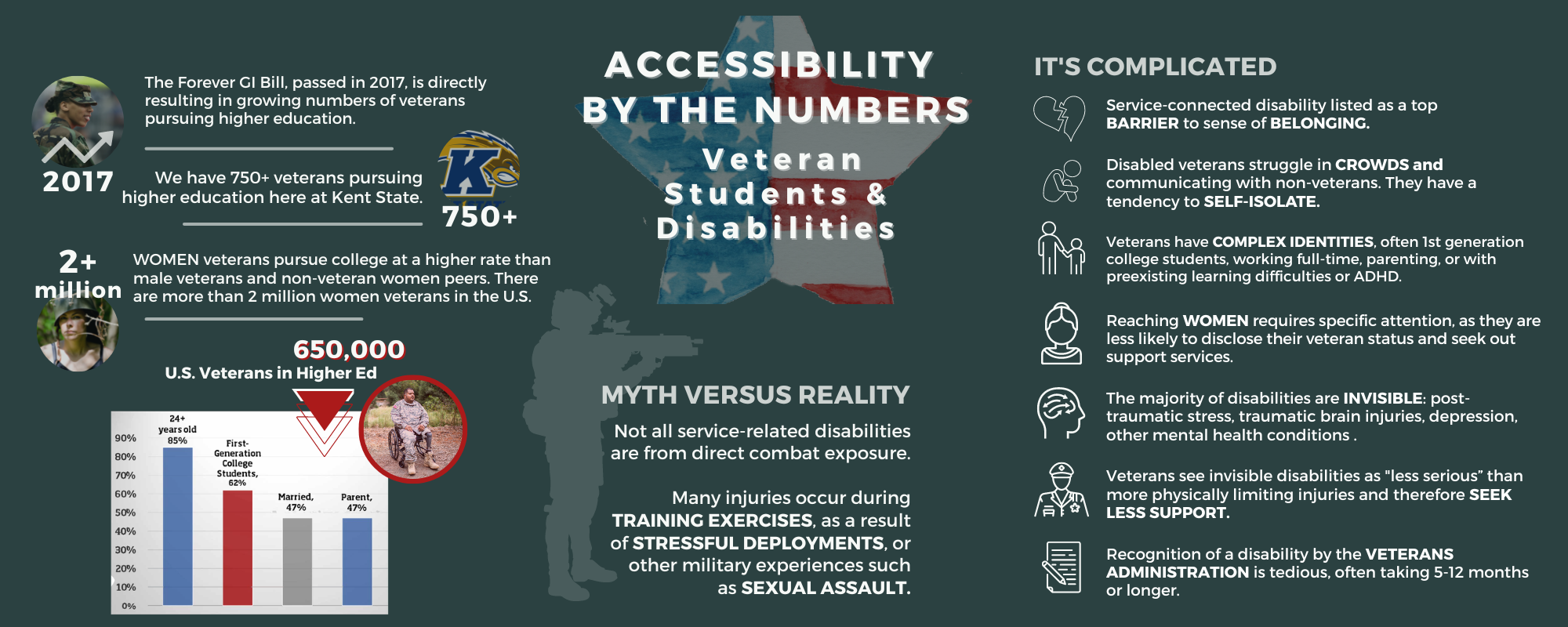Accessibility for Veterans
Image

ACCESSIBILITY BY THE NUMBERS
Veteran Students & Disabilities
- The Forever GI Bill, passed in 2017, is directly resulting in growing numbers of veterans pursuing higher education.
- We have 750+ veterans pursuing higher education here at Kent State.
- WOMEN veterans pursue college at a higher rate than male veterans and non-veteran women peers. There are more than 2 million women veterans in the U.S.
- 650,000 U.S. Veterans in Higher Ed
Statistics indicate that of the veterans in college:
- 85% are 24+ years old
- 62% are first-generation college students
- 47% are married
- 47% are parents
- 26% have a disability (NCES, 2020)
MYTH VERSUS REALITY
Not all service-related disabilities are from direct combat exposure. Many injuries occur during TRAINING EXERCISES, as a result of STRESSFUL DEPLOYMENTS, or other military experiences such as SEXUAL ASSAULT.
IT'S COMPLICATED
- Service-connected disability listed as a top BARRIER to sense of BELONGING.
- Disabled veterans struggle in CROWDS and communicating with non-veterans. They have a tendency to SELF-ISOLATE.
- Veterans have COMPLEX IDENTITIES, often 1st generation college students, working full-time, parenting, or with preexisting learning difficulties or ADHD.
- Reaching WOMEN requires specific attention, as they are less likely to disclose their veteran status and seek out support services.
- The majority of disabilities are INVISIBLE: post-traumatic stress, traumatic brain injuries, depression, other mental health conditions .
- Veterans see invisible disabilities as "less seriousÔÇŁ than more physically limiting injuries and therefore SEEK LESS SUPPORT.
- Recognition of a disability by the VETERANS ADMINISTRATION is tedious, often taking 5-12 months or longer.
